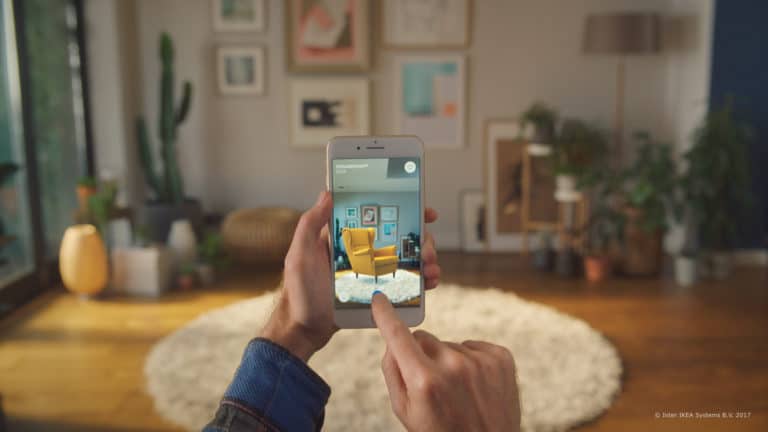
This post originally appeared at AR Insider’s partner Street Fight.
How 6 Brands Are Using AR to Drive Experience Marketing
By Stephanie Miles, Street Fight, January 28, 2019
Brand marketers in search of the ‘next big thing’ have decided that augmented reality fits the bill, and spending on the technology is skyrocketing.
Worldwide spending on AR is expected to reach $45.1 billion by 2022 according to ARtillery Intelligence, as new hardware ships and AR moves further into the mainstream. Acceleration in the AR market is also being boosted by brands’ growing frustration over the limitations in display advertising. With AR, brands can bypass ad blockers and unleash their creativity in a bid to capture the attention of consumers.
Let’s take a look at how six top brands are using AR for experience marketing right now.
1. Disney
Lines at theme parks are getting longer as attendance soars, but Disney is hoping a “reverse AR” app can make the wait a little easier. The company’s Play Disney Parks app, which was released last year, includes games that families can play while they are in line at Disney theme parks. Using Bluetooth beacons, Disney tracks where players are located in real-time and then asks players to search for markers near their locations. Players can also use the app to trigger real-world events. For example, while standing in line near the Peter Pan’s Flight ride, players can make Tinkerbell appear inside a lantern.
2. Zara
Looking to provide shoppers with an all-new experience, Zara emptied out its store windows and launched a new AR experience for visitors at seven of its U.S. locations. Visitors who download Zara’s mobile app and point their phones at empty store windows see models come to life on their smartphones, as holograms in short-sequence clips feature them posing, moving, and talking. The products those models are wearing in the short clips can be ordered from within Zara’s mobile app or inside any Zara store. Visitors are encouraged to take photos of the holograms and “share” the experience on social media as well.
3. Patrón
While it’s hard to recreate the experience of drinking tequila on a mobile device, Patrón is giving it a shot. In The Patrón Experience, which came to iOS11 in 2017, Patrón uses Apple’s AR toolkit to take customers on a tour of the company’s Mexico distillery. Users can project a miniature hacienda onto any flat surface, along with a tiny virtual bartender and an actual-size version of a Patrón bottle. Users who tap on a bottle can watch and listen as the virtual bartender explains the difference between the four types of Patrón liquor.
4. IKEA
IKEA is one of a number of home furnishings retailers to integrate AR into its consumer-facing mobile app. Launched in the fall of 2017, the IKEA Place app shows shoppers how more than 2,000 furniture items would look inside their own homes. The IKEA Place app uses Apple’s ARKit platform. The app shows products true-to-scale (accurate down to the millimeter), which is what allows shoppers to feel confident that furniture they buy online, after viewing in their spaces through the app, will fit inside their own homes.
5. Sherwin-Williams
What IKEA has done for the home, Sherwin-Williams is doing for walls. The company is using AR to take the guesswork out of paint selection, with a new mobile app released last year. In addition to giving users a way to preview paint colors through their own still photos—a feature that was available in previous Sherwin-Williams apps—this new app enables live previews of spaces and is capable of differentiating walls from floors and other surfaces in a space that the user might not want to paint, like electrical outlets and hanging artwork.
6. BIC
BIC has an entire online coloring studio with activities for children, but the company has managed to create an even more interactive experience using AR technology. A mobile app called DrawyBook, created in partnership with the children’s book author Elissa Elwick, encourages kids to create their own artwork on paper (using BIC products, of course) and then take a photo with their smartphones or tablet and upload the artwork to the DrawyBook gallery. Once it’s in the gallery, DrawyBook brings the artwork to life using AR technology to place it inside an interactive story.
See more about AR Advertising and AR Commerce in our recent reports.
For deeper XR data and intelligence, join ARtillery PRO and subscribe to the free AR Insider Weekly newsletter.
Disclosure: AR Insider has no financial stake in the companies mentioned in this post, nor received payment for its production. Disclosure and ethics policy can be seen here.
Header image credit: IKEA
